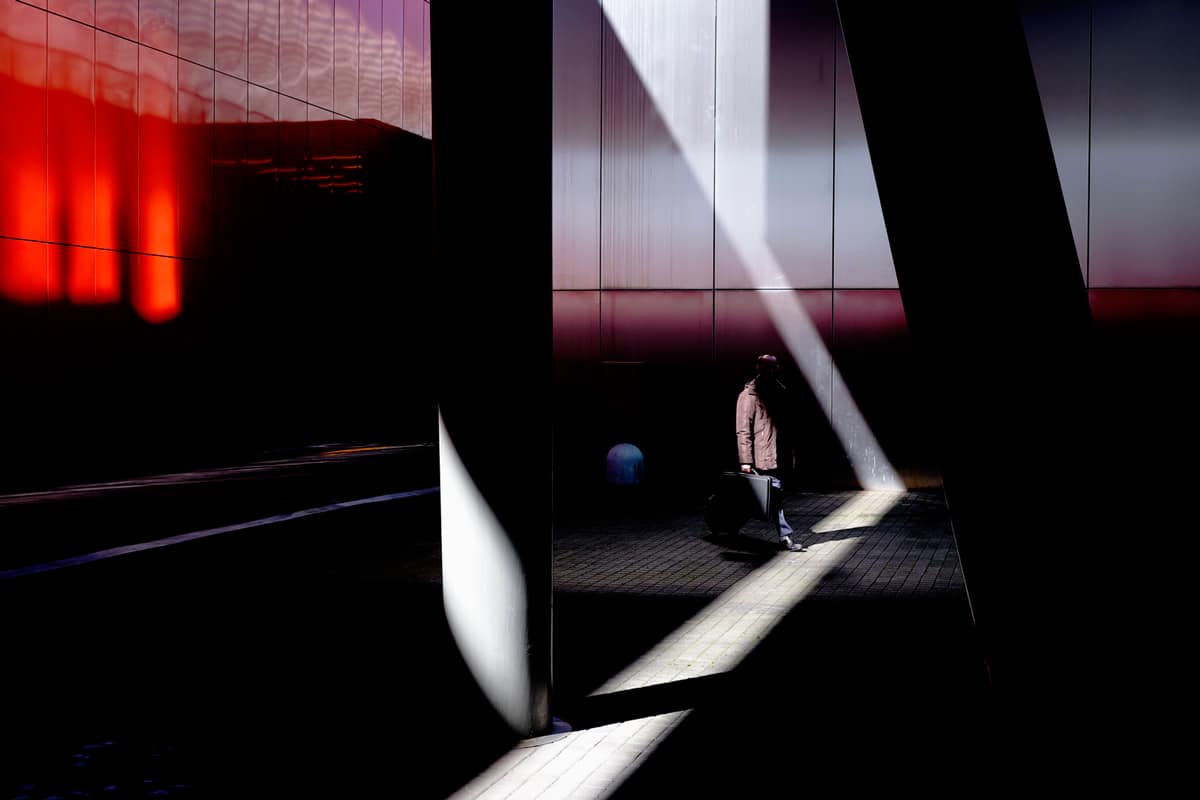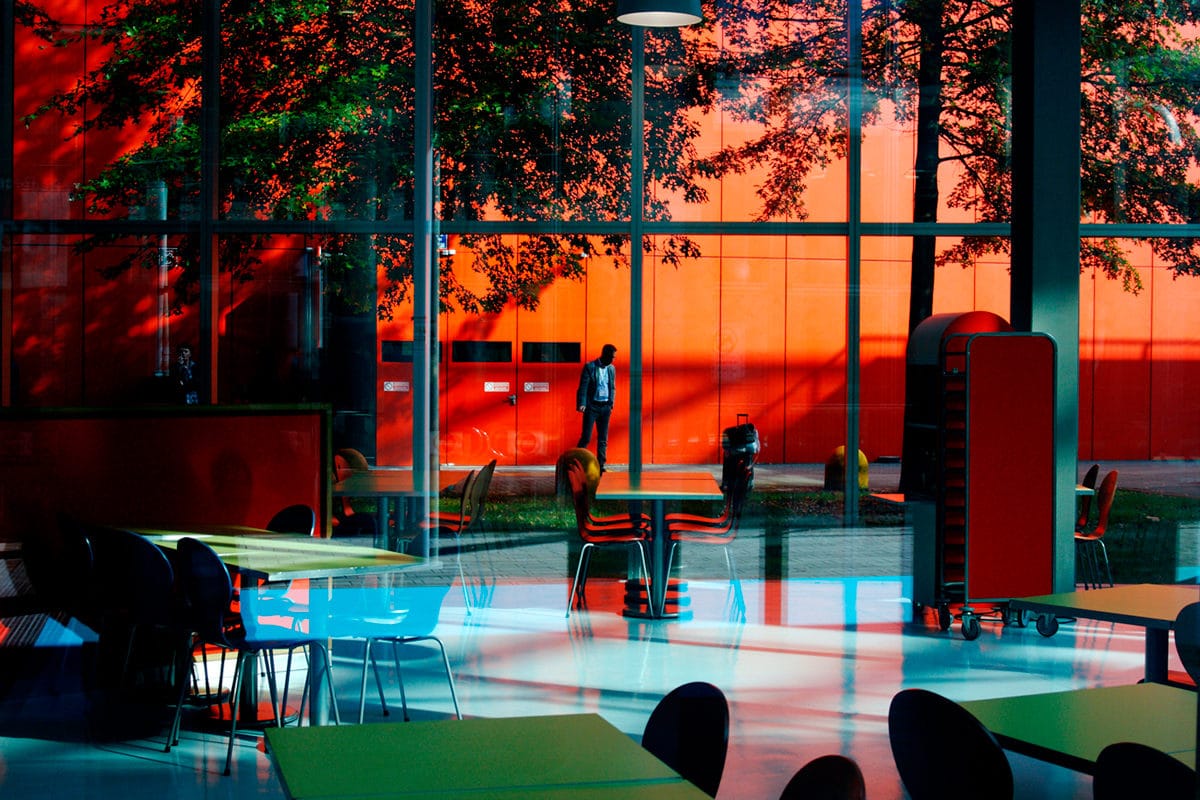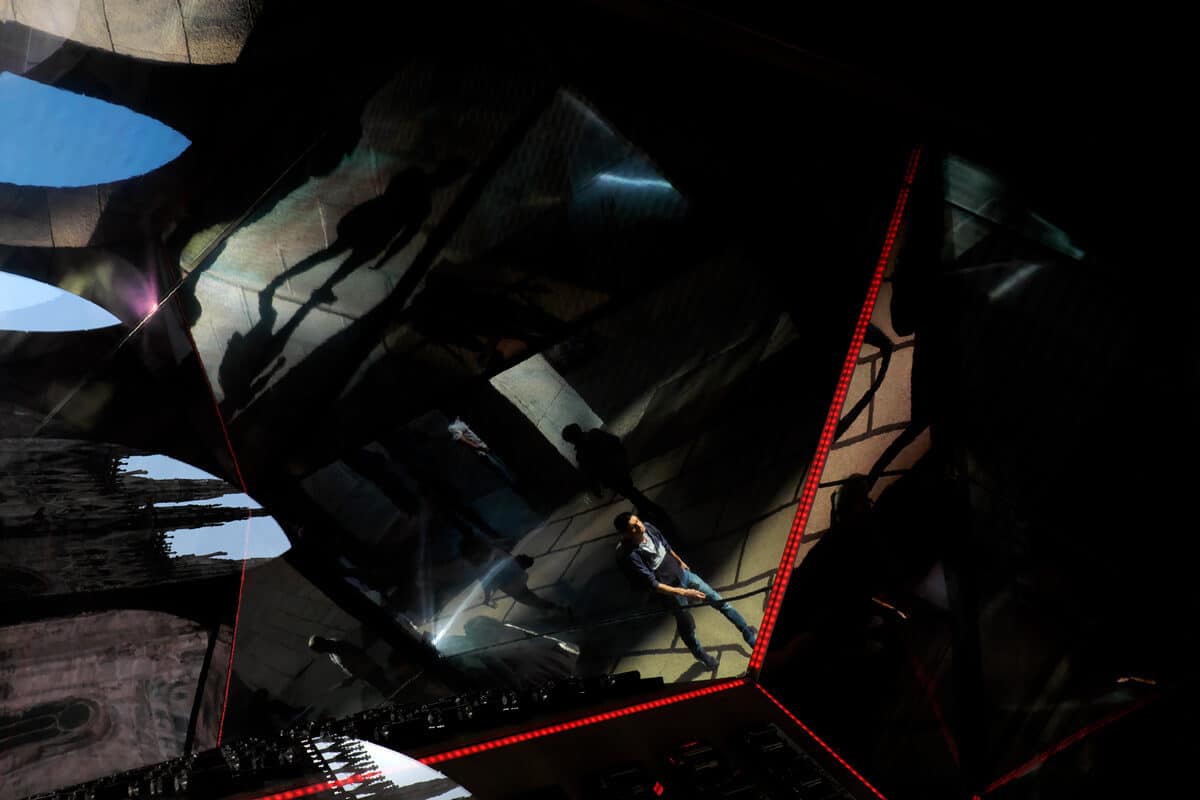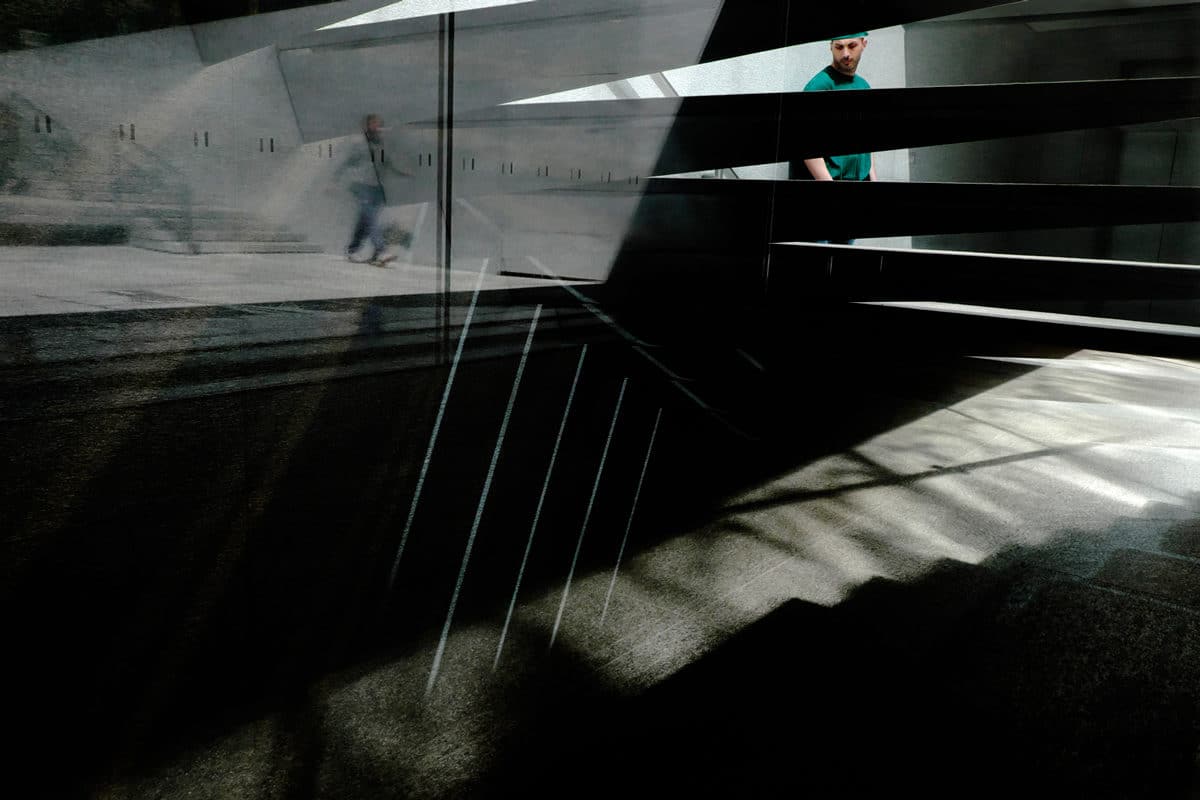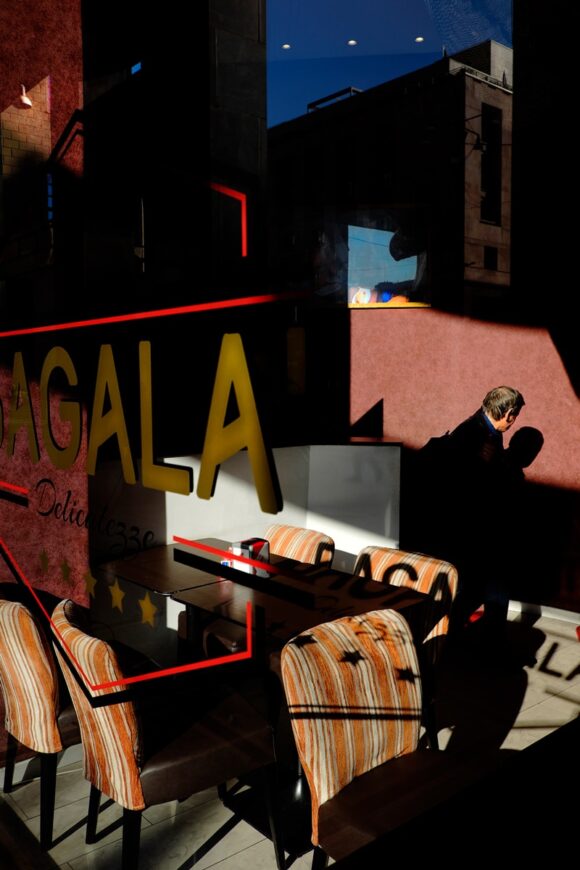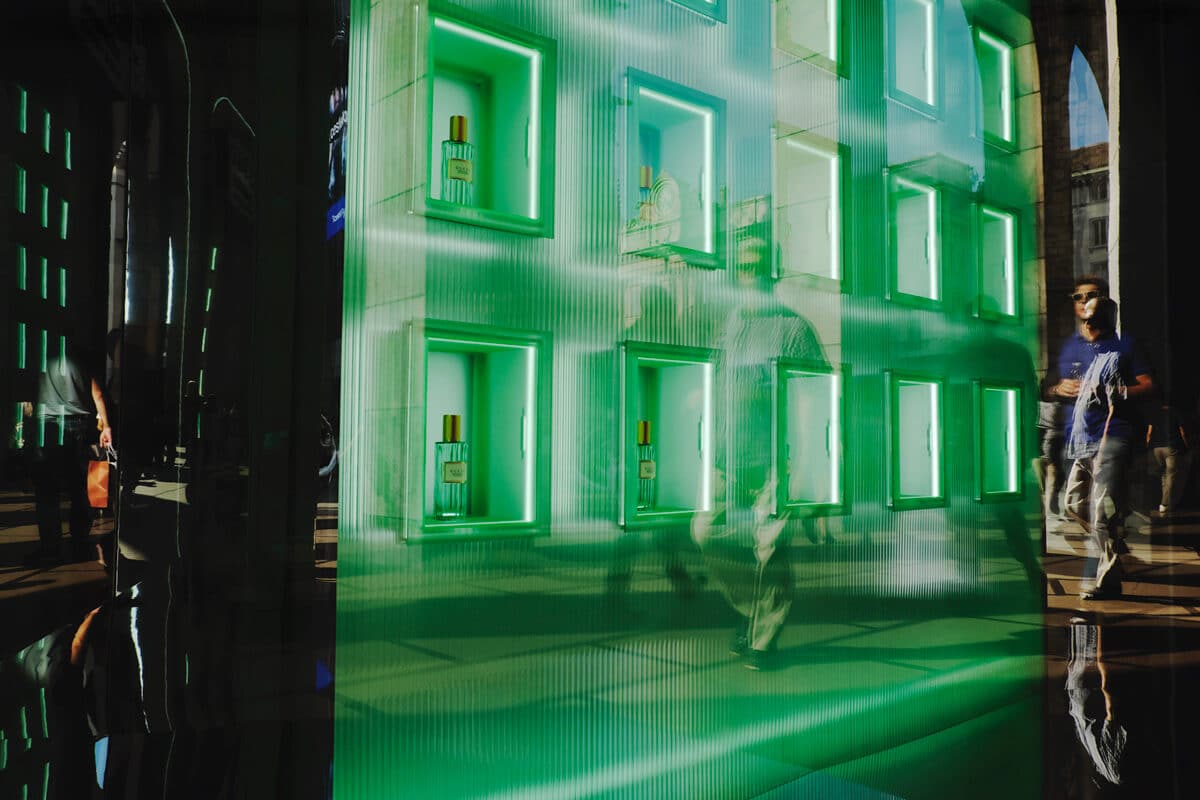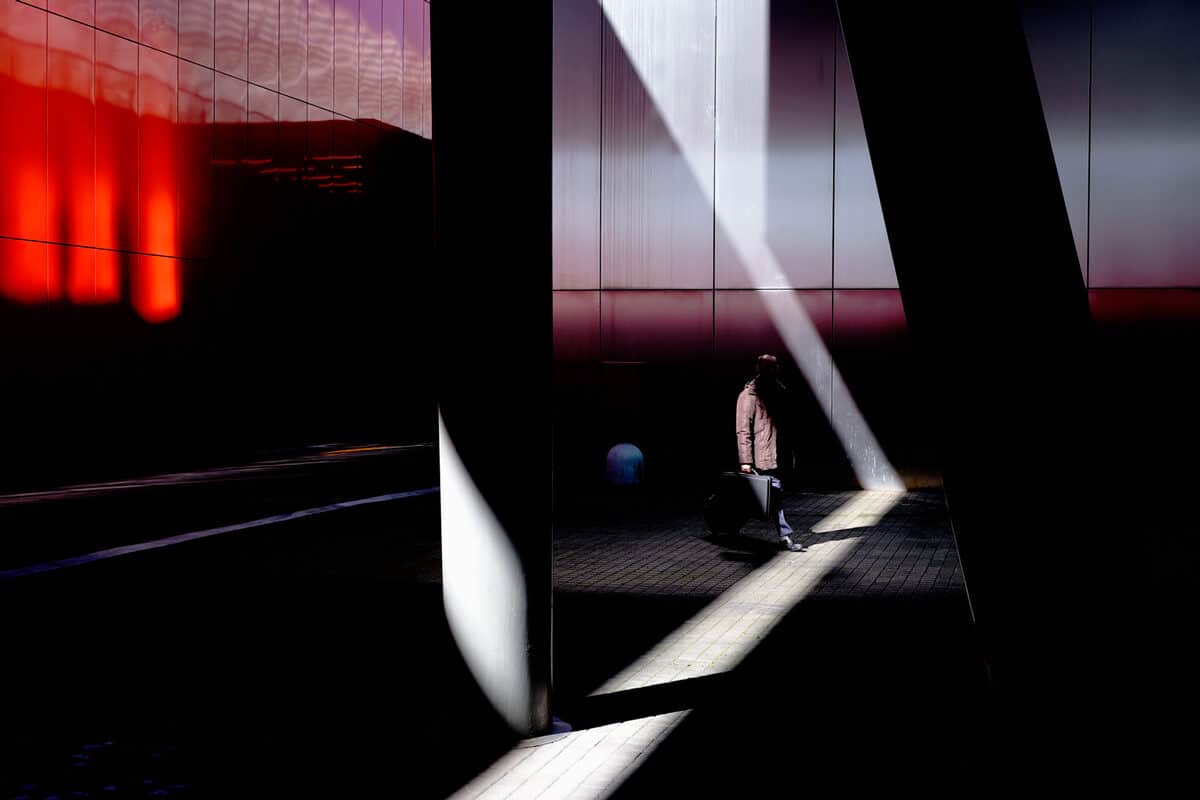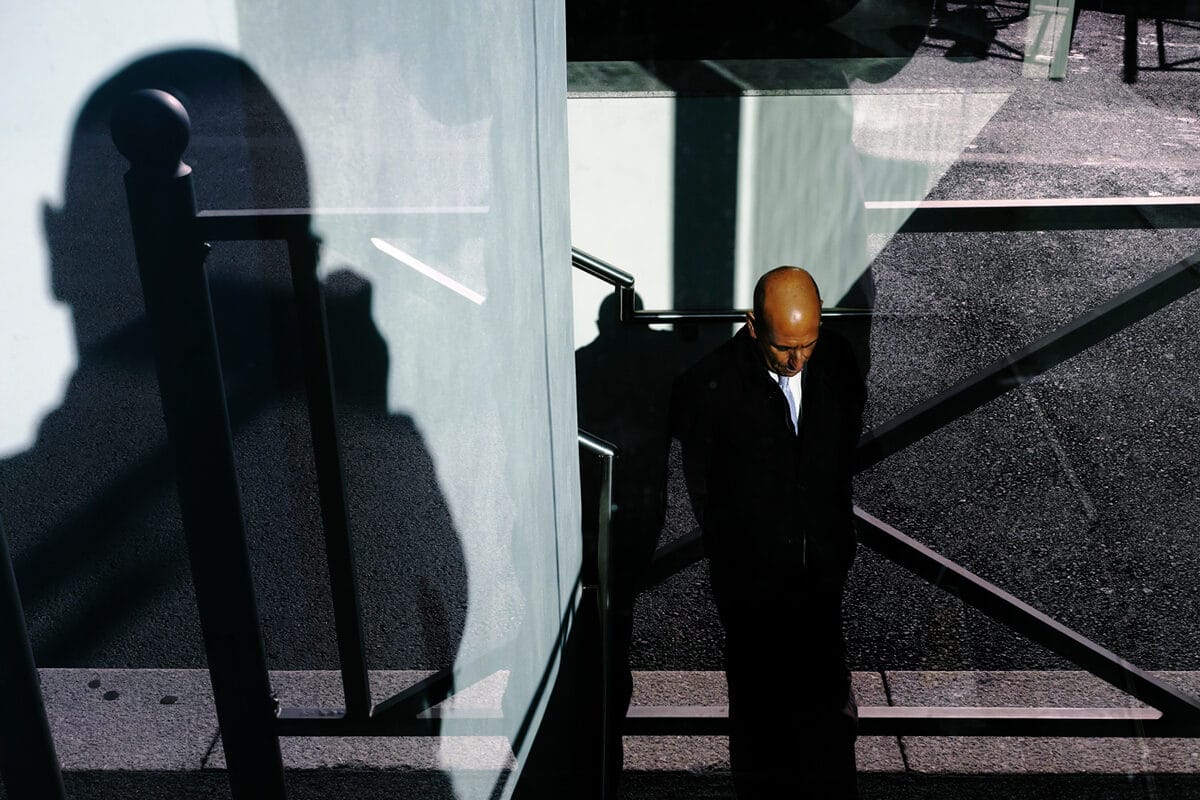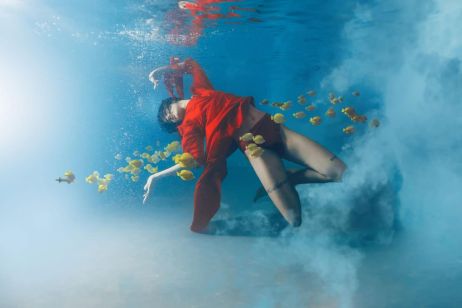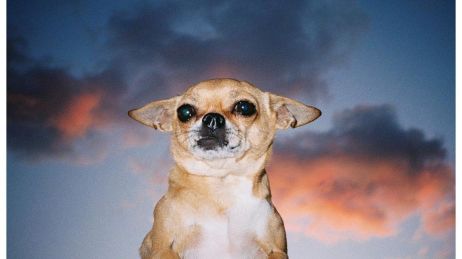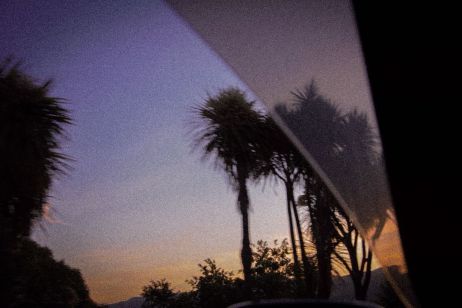In vertiginous, yet subtle compositions, photographer Stuart Paton places a mirror in front of the alienation of our thoughts. Transformed into open-air theatres, the streets of Milan appear as scenes of a world in disarray, where our daily lives are becoming more and more complex.
“The street is the foundation and soul of photography. I like the democratic purity of the style. The idea that you can take the world’s pulse down the local High street,”
says Stuart Paton. The Scottish artist, based in Milan, captures the intensity of our modern world in the hustle and bustle of the Italian city. He skillfully composes pictures in movement that cannot be deciphered at a single glance. His electric images resist the judgment of our first sight, and slowly intrude themselves into our minds. They provoke us and question our perception of everyday life. A reflection multiplies our interpretations, a shadow segments the composition, and a colour raises the tension – like a sculptor, the photographer carves out shapes into his shots. So many interpretations are superimposed, that it becomes difficult to know whether we find ourselves facing the urban landscape of some metropolis, or the depths of our own thoughts. In this way, the artist, who says that he came to photography “by accident, but also by necessity”, transcends the typical standards of ordinary street-photography, and dodges all classification. He distances himself as far as possible from the genre. “There is fantastic work today, but it is undermined by a number of childish absurdities”, the artist argues, not out of arrogance – but out of sheer love for the mastery of photography.
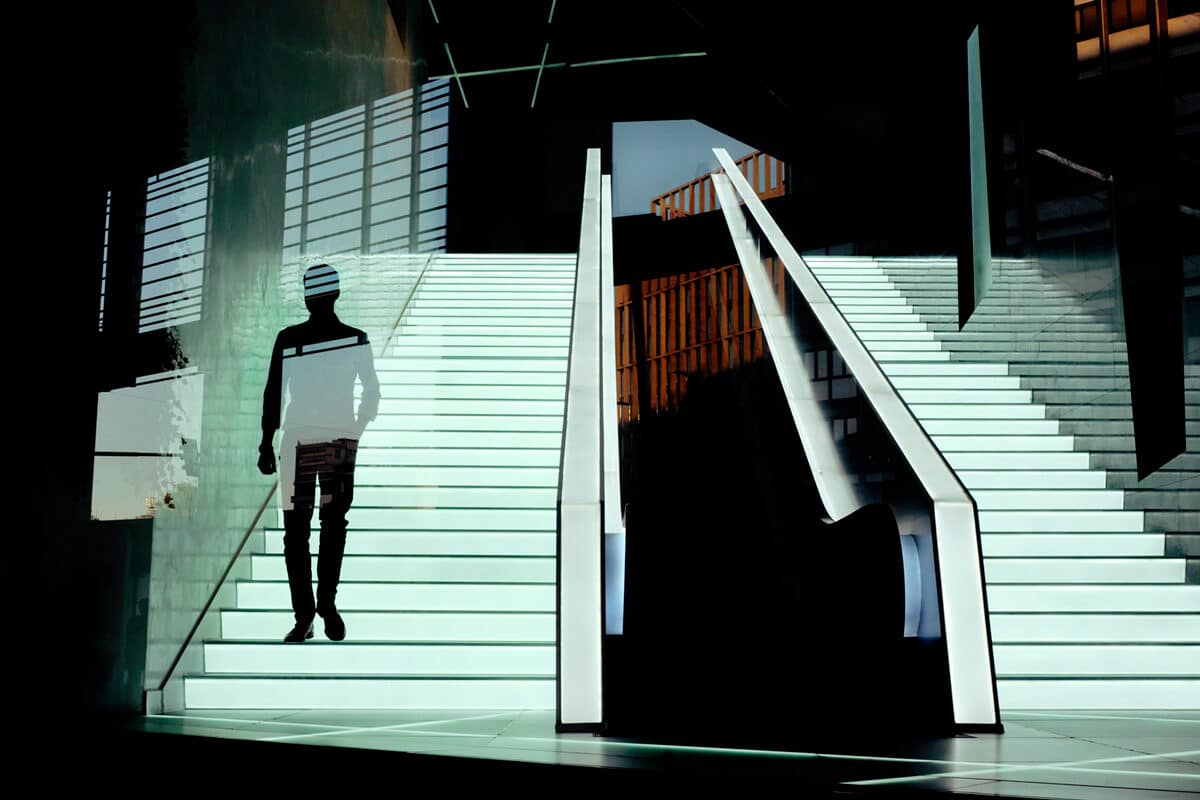
A howl of anguish and rage
“I peddle lo-fi social comment laced with hi-fi personal neurosis. Photography is my way of out-running my demons and re-enchanting my world. A mixture of
Guernica and Shangri-Las,” explains Stuart Paton to describe his work. A true aesthetic explosion, the complexity of his compositions is the result of a significant tension between the acute analysis of public space and the reflection on our ways of living today. The “modern malaise”. The result is implacable and uncompromising images where the elegance of the composition is matched only by the firmness of the message. As the driving force behind all his work, the photographer is fuelled by pure emotion. “I want the picture to be incandescent with emotion. Like Pete Townsend’s Rickenbacker (the legendary guitarist from The Who) being rammed into an amp.”
In the interstices of a geometry that borders on cubism, the cries of an artist struggling to untangle the knot of our modern societies escape. “I’m trying to transcribe the notion of disorientation and sensorial overload in a howl of anguish and rage.” he explains. By favouring a wide angle lens (28 mm), he incorporates as much information as possible to highlight the excesses of our production methods. “In the era of post-truth and big-data, I try to make cracked mirror poetry of a fraying ideology: the collateral roadkill of capitalism,” says the artist. In the midst of society’s disarray, Stuart Paton reaches out to offer us “an eschatological eye-candy” (which concerns the end of the world, ed.).
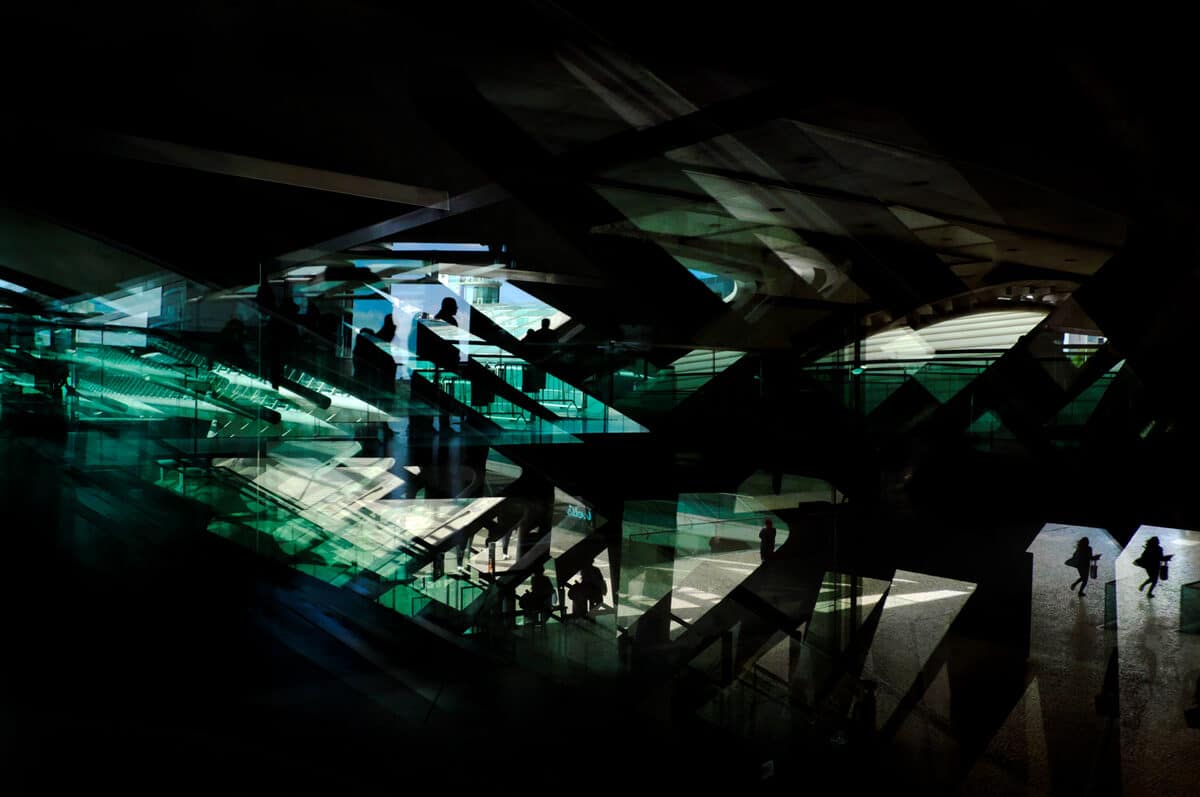
Tiny Trojan Horse
When emotion provides the energy, politics give the direction. “In troubled times like these, I don’t afford myself the luxury of being a neutral observer but approach photography armed with a defined political viewpoint. My tiny Trojan Horse to their Achilles’ heel,” the Scottish photographer continues. Intimately militant, his work is a singular emotional response in a social context where rights are continually violated. Since his beginnings in photography, in the working-class neighbourhoods of New York, or during Apartheid in South Africa in a more documentary style, Stuart Paton recognises a common thread: “class politics and existential angst”. Until recently, it was more obvious to point the finger at social problems, but in a digital world, where information is massively overwhelming us, the artist seeks to point out our shared burden. “To the fundamental alienation of capitalist ideology has been added a whole series of toxic currents. So I try to convey the feeling of being adrift, submerged, emptied”, he explains. By exploring his own anxiety and fears, Stuart Paton seeks to convey a feeling that we could all share. “An image blossoms at the intersection between photographer and viewer. A message in a bottle written in vain unless it lands on a shore. I’m sure most people don’t grasp the political dimension, but it’s satisfying when someone perceives it,” the photographer acknowledges. In an emotional and militant explosion, Stuart Paton delivers dizzying but delicate compositions where the streets of Milan resonate with the modern alienation of our thoughts.
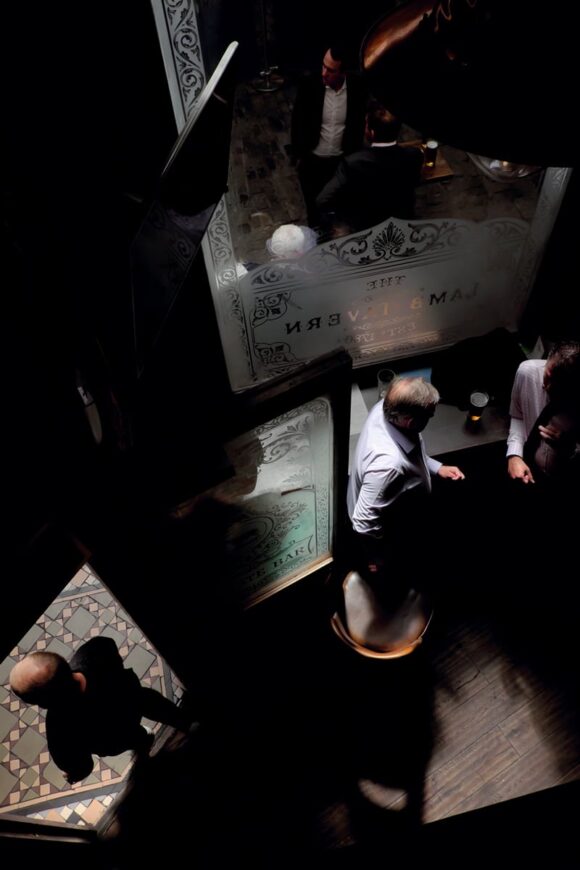
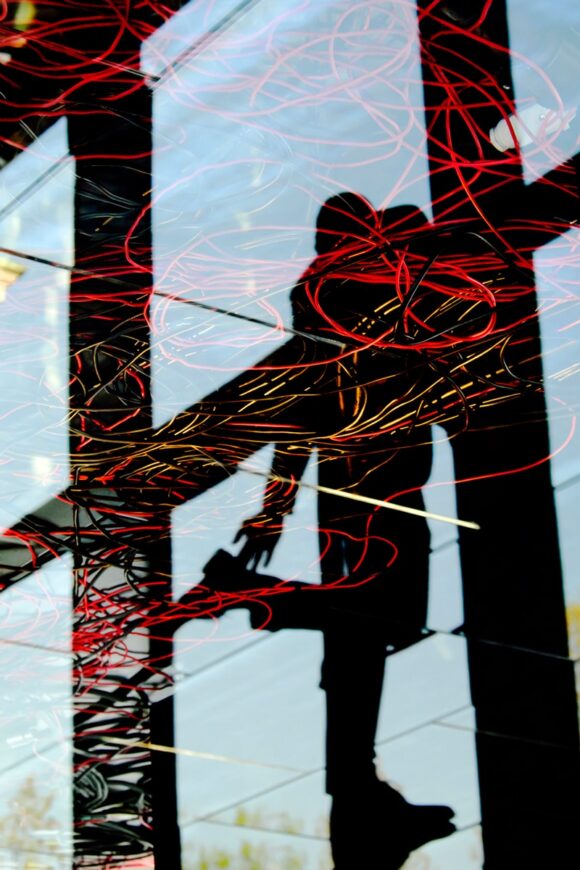
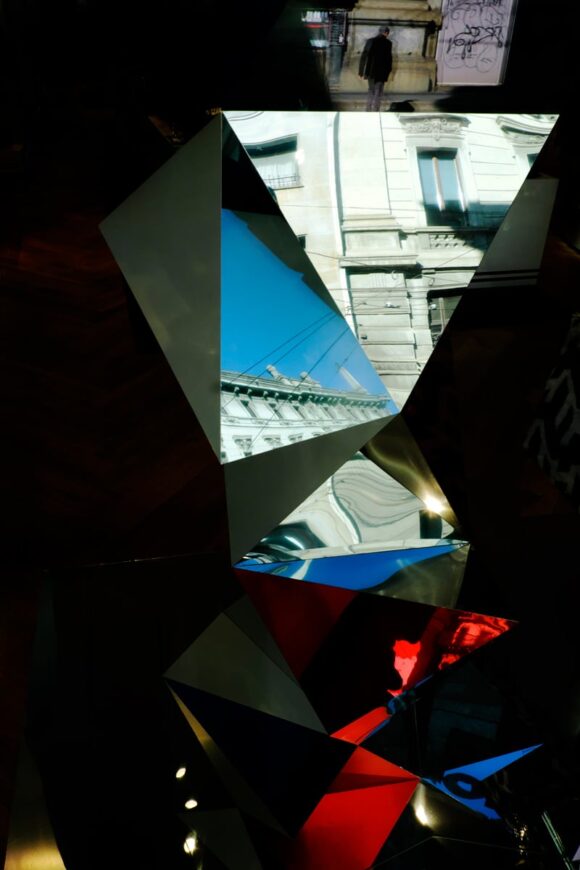
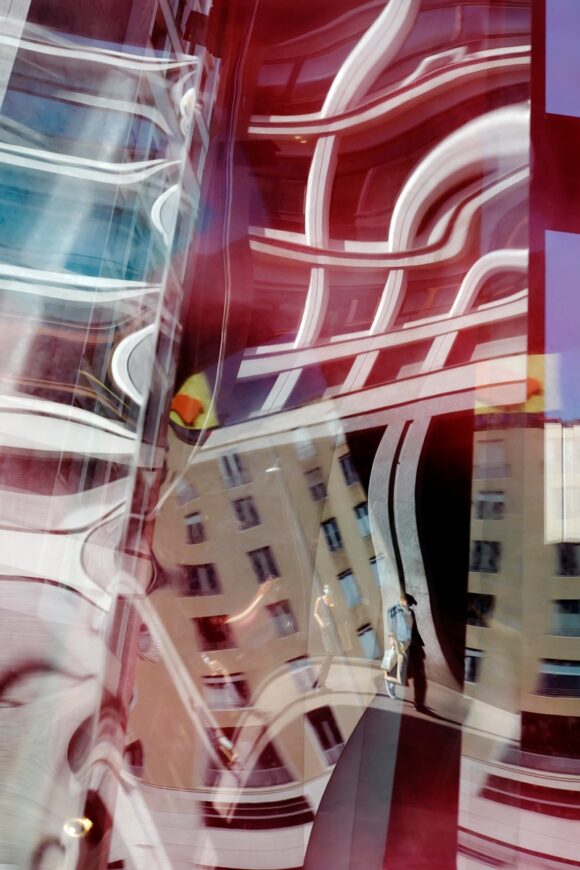
© Stuart Paton
